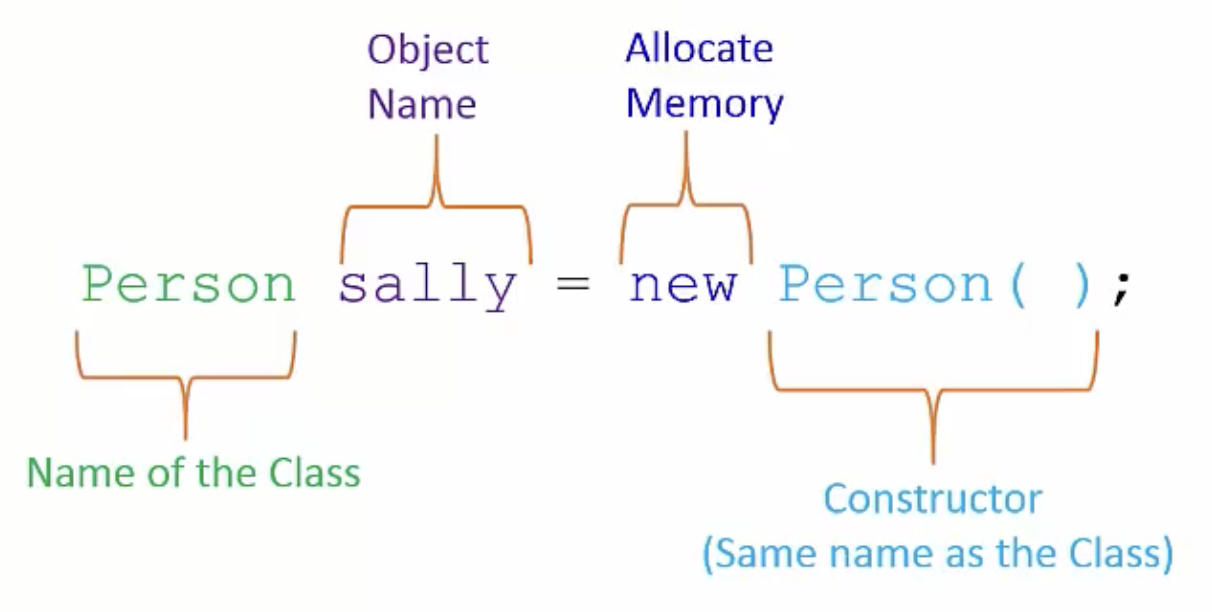Class: a blue print or template for creating a type of objects. Object: an Instance of a class, also known as class object or class instance. It is made up of data and methods.
Declaration: Defines a variable’s name and type without assigning it a value. For objects, it means specifying the class type of the object reference name. Instantiation: The new keyword is used and memory is allocated for an object, the reference to the object is created and returned from the new keyword. Initialisation: The values put into the memory is allocated, this is what a constructor of a class does.
Initialisation process
 The new keyword allocates memory for the person object.
The constructor then initialise the newly allocated memory.
The new keyword allocates memory for the person object.
The constructor then initialise the newly allocated memory.
Default constructor
A default constructor is a no-argument constructor automatically provided by the Java compiler if no other constructors are explicitly defined in a class. The purpose of the default constructor is to ensure that every class has a constructor, allowing objects to be instantiated. Java takes back the default constructor once a constructor is explicitly defined by the programmer.
Back to parent page: Java Standard Edition (Java SE) and Java Programming
Web_and_App_DevelopmentProgramming_LanguagesJavaClassObjectDefault_Constructor
Reference: